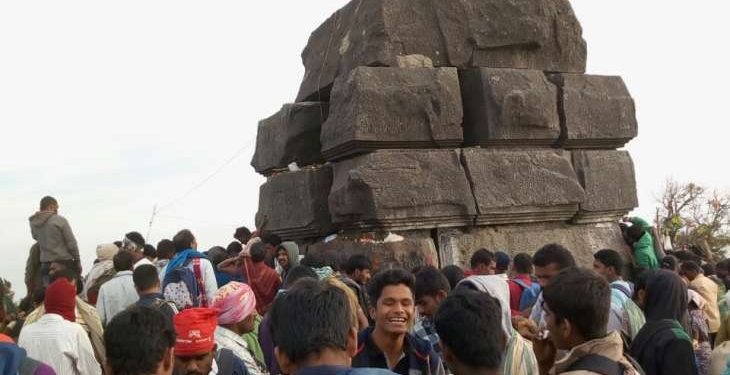Rayagada: The Mahendragiri shrine, located at the Mahendra terrain on the border of Odisha-Andhra Pradesh in Rayagada block of Gajapati district, is a famous Shaivite shrine in south Odisha.
Unlike other Shiva temples in the country, the Mahendragiri temple is unique in several ways.
Maha Shivaratri is celebrated at this temple one day before than other temples in the country.
This year also, the temple celebrated Maha Shivaratri Sunday. While Maha Shivratri festival is being observed across the nation Monday, Mahendragiri temple marked the festival Sunday.
Devotees from Odisha and Andhra Pradesh thronged the shrine in good numbers. They spent the whole night at the shrine, burning the midnight lamps. They have started returning home Monday after offering prayers to the Lord.
The temple’s link with Satya yug, Treta yug and Dwapar yug is another reason why the devotees are visiting the shrine.
As per legend, in Satya yug, Mahadev did ‘tapasya’ in this hill and also established Gokarneswar to absolve off the sin of cow slaughter.
In Treta yug, Parshuram chose this place for meditation and the hill is also believed as the one from where Hanuman leapt towards Lanka.
Similarly, in Dwapar yug the Pandavas stayed in this hill during their exile (Agyaat Vaas).
This apart, Mahendragiri is also believed to be the place where Neel Madhav was worshipped and is the first place of Daru Brahma.
There are temples dedicated to Yudhistir, Bhim, Arjun, Nakul, Sahadev and mother Kunti here.
The Bhim temple is one of the main attractions for visitors and devotees. Nineteen huge stones, each weighing approximately 100 to 150 quintals, form this temple.
The architectural design of this temple is similar to the one seen in Buddhist temples.
According to legend, Bhim, who was the most powerful, placed the stones to erect the temple.
The five brothers were supposed to construct the temple in one night. However, they could not finish its construction before day break and so it is believed to be why the temple is kept half constructed and is complete in itself.
There are two narrow openings — one at east and the other at west end– used as entrance and exit of the temple. Devotees go through the passages.
The striking feature is that the first look often gives impression and it seems a difficult task for fat people to go through these narrow passages. But once you decide and take the plunge, anybody could easily go through the passages and experience the wondrous architecture.
Devotees and tourists who come to this place hop Mahendraswar, Bhimeswar, Chandreswar, Dharmrajeswar, Arjuneswar, Nakuleswar, Sahadeveswar, Kuberswar and Brahmeswar caves to enjoy their natural beauty.
The visitors have to trek three and a half kilometres through hilly terrain to reach the shrine.
Local residents urged the administration to take steps for the development of the shrine.
PNN






































